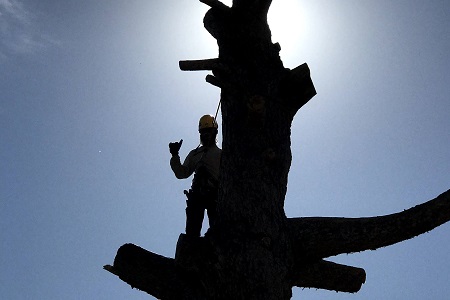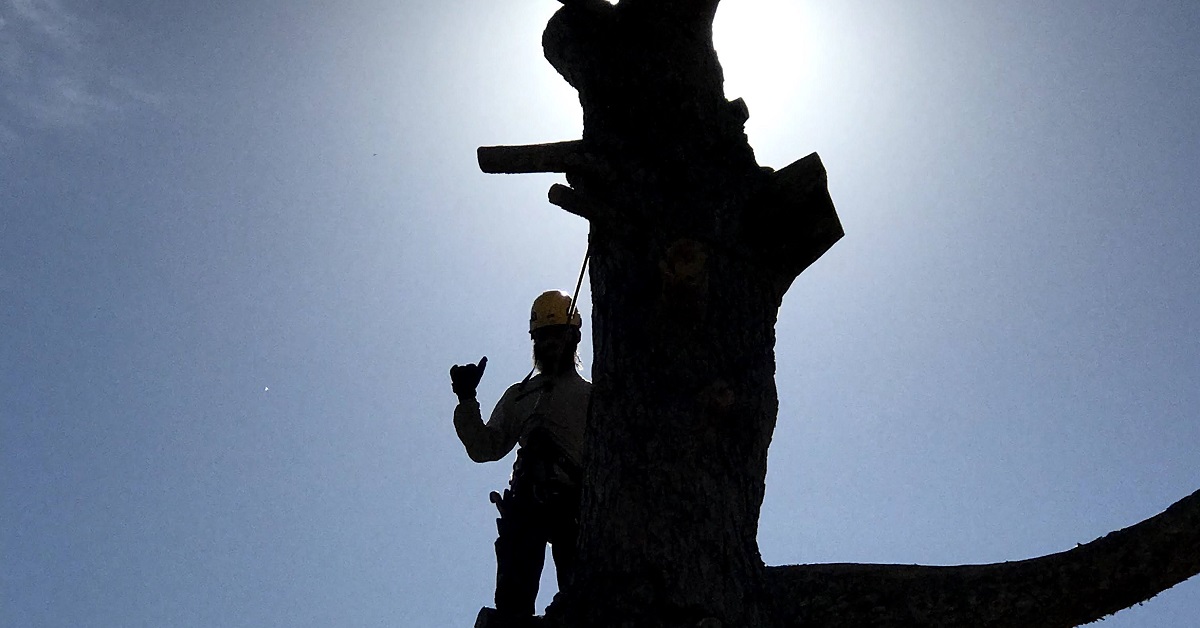Is It Time To Have Your Tree Removed?
It’s out there, alright. Still standing tall in the yard, but it’s starting to become concerning. Is it going to fall?
Homeowners may think to themselves, “Man, that backyard tree doesn’t look well lately, but is it because of the changing seasons, or is something more sinister at play?” Tree removal is dangerous and can result in property damage and injury if handled by an amateur. Here are a few signs it’s time to call the local tree removal experts.
Signs a Tree Needs Removal
It’s entirely reasonable to have an emotional attachment to the trees surrounding one’s home and property. However, dead and dying trees are a threat to the family’s safety. The safest thing to do if a tree seems like it needs removal is to call a professional arborist.
Fungus Growing Near the Base of the Tree
Look for fungus growing near the base of the tree. Due to the dry climate here in Phoenix, it’s unlikely that homeowners will come across any fungus. But, if they do, they should contact an arborist to evaluate the tree. Keep in mind that fungus is different from moss and lichen. Moss is natural, though uncommon in Phoenix. Lichen is a symbiotic combination of moss and fungi and an indication the tree is growing slower than usual. Additionally, mushrooms and other fungi typically only grow during the most humid parts of the year here in Arizona. Don’t attempt to eat any mushrooms found in the yard, as a lot of wild mushrooms native to Arizona are poisonous.
Tree’s Roots Show Along the Ground
If the tree’s roots seem to grow along the soil’s surface instead of into the ground, the tree needs attention. This strange growing pattern indicates the tree is struggling to manage the land. Shallow root systems make trees weak and more susceptible to damage from animals and inclement weather. While an exposed root system doesn’t necessarily mean the tree needs immediate removal, it’s still a good idea to have it evaluated by a professional.
Hole in the Tree’s Trunk
Holes form in tree trunks when the tree prunes itself and drops a branch. The cavity doesn’t mean that the tree needs removal, but it can lead to decay inside of the tree if not monitored closely. Healthy trees typically handle wounds like this well on their own. However, if the tree can’t produce enough wood around the cavity, then it’s vulnerable to decay-causing organisms that break down the wood from within the tree.

A hole in the tree’s trunk doesn’t necessarily mean the tree needs removal. The cavity provides a habitat for local wildlife.
If a tree in the yard has a cavity, homeowners may want to fill the hole with concrete or foam. Both of these methods used to be common, but recent research and expert guidelines suggest that no real benefit comes from filling the cavity. The hole in the tree trunk provides shelter for critters, but if it seems to be a source of decay, make sure to call a professional arborist.
Missing Bark and Deep Cracks
If the tree’s bark is cracked or missing in areas, the tree might be dying. Arborists refer to the cracked area as a canker. Cankers weaken trees at the spot of the crack, and they make the trees more susceptible to falls. Make sure to contact a professional arborist if any deep cracks appear on trees in the yard.
Losing Leaves in the Opposite Direction
Most trees lose their leaves from the inside to the outside. If the tree in the backyard loses its leaves from the outside in, this means the tree has problems with its root zone. Issues with the root system lead to instability, so call a professional to evaluate the tree as soon as possible.
Dead and Falling Branches
If the tree drops multiple branches and parts of branches, it’s a clear symptom that something is wrong with it. Usually, the tree does this to reduce its size, so there’s not as much to feed. Contact an arborist to take a look because dead branches are dangerous. They can fall at any time, injuring whoever or damaging whatever is below.
Leaning Trunk
If the tree leans more than fifteen degrees, it probably needs removal. However, keep in mind that this is only if the leaning is a result of wind or root damage. If the tree naturally grew that way, this may not be an issue. No matter, an arborist can figure it out. Just call them and let them know there’s a tree that is concerning you, and they’ll take care of the rest.
Tight Branch Growth
Watch out for branches growing close together in a V-shape. A healthier bond is in a U-shape. Trees such as elm and maple trees tend to break at the forks, but call an arborist to check it out.
Palm Tree Removal
 Phoenix residents often have palm trees in their yards. Removing a palm tree is a bit different, due to the many varieties out there, some of which are quite valuable. Before removing a palm tree from the property, make sure to identify what kind of palm tree it is. Websites such as Palm Identifier (.com) have handy identification tools available, or a professional arborist such as those at PV Trimmers can identify it for you. Some palm trees are worth enough that homeowners may opt to remove the tree and relocate it rather than chopping it down.
Phoenix residents often have palm trees in their yards. Removing a palm tree is a bit different, due to the many varieties out there, some of which are quite valuable. Before removing a palm tree from the property, make sure to identify what kind of palm tree it is. Websites such as Palm Identifier (.com) have handy identification tools available, or a professional arborist such as those at PV Trimmers can identify it for you. Some palm trees are worth enough that homeowners may opt to remove the tree and relocate it rather than chopping it down.
How Can PV Trimmers in Phoenix Help?
PV Trimmers has over twenty years of professional tree trimming and removal experience in the Phoenix area. PV Trimmers has an impressive team of certified arborists who are qualified to handle complicated issues related to those beloved trees in the yard. Whether homeowners are looking for tree removal, stump grinding, or advice on a struggling tree in the yard, PV Trimmers can help. Call today to get started and for a free estimate!

